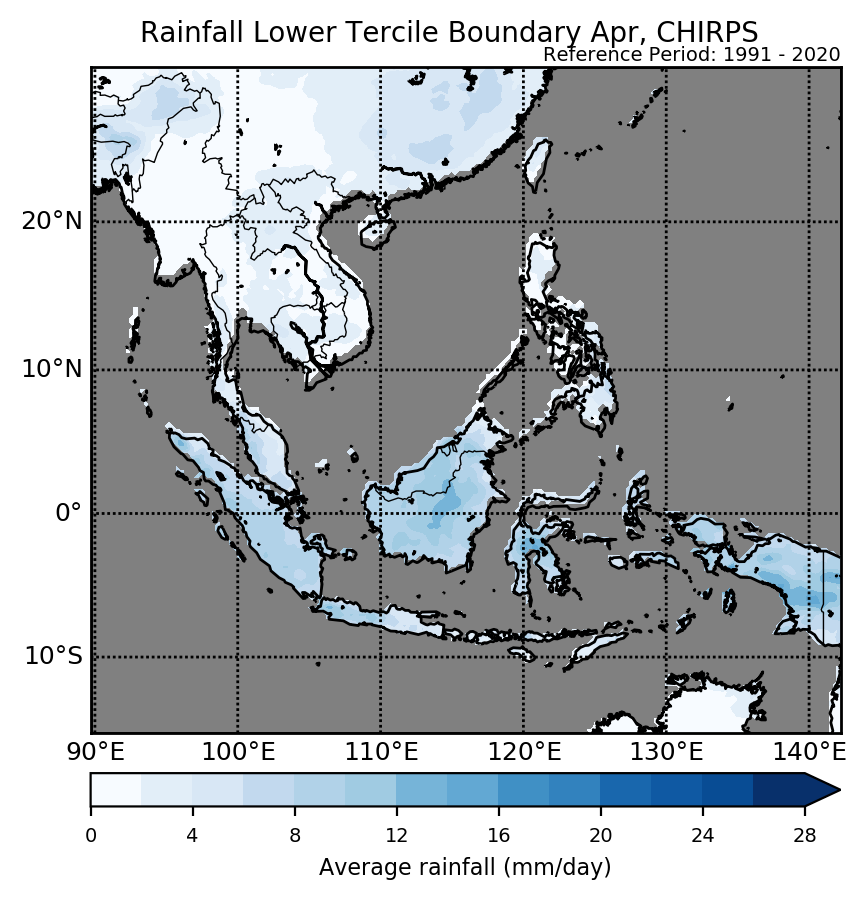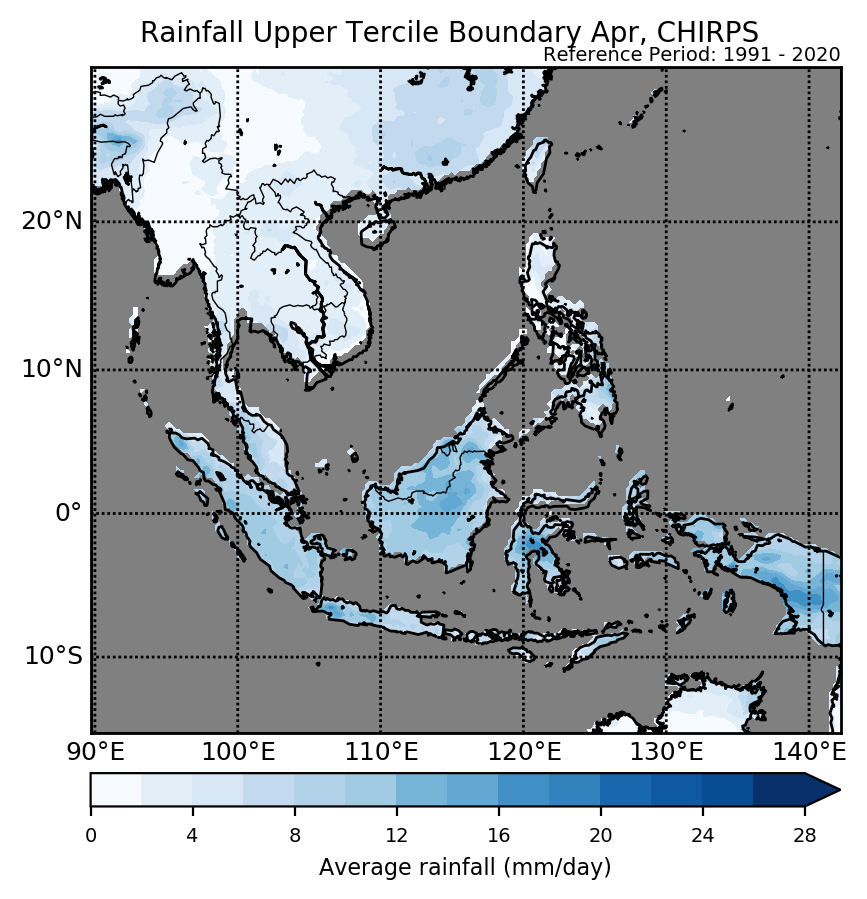Rainfall
Monthly Rainfall Outlook: April 2024
Issued: 31 Mar 2024
For April 2024, above-normal rainfall is predicted for much of the southern ASEAN region and below-normal over the northern ASEAN region.
For April 2024, above-normal rainfall is predicted with low likelihood for much of the southern ASEAN region based on the multi-model ensemble (Figure 4). The ECMWF model (Figure 2) shows the highest confidence and the largest extent of the above-normal rainfall over the equatorial region, followed by the UK Met Office model (Figure 3), and the NCEP model (Figure 1) predicting a mix of near- to above-normal rainfall. For above-normal rainfall over the southern ASEAN region, models’ skill is moderate to good for the ECMWF and UK Met Office models, and low to moderate for the NCEP model.
Below-normal rainfall is predicted over the northern ASEAN region, based on the multi-model ensemble (Figure 4). The ECMWF model (Figure 2) predicts below-normal rainfall over these regions with highest likelihood, followed by the UK Met Office model (Figure 3) and then the NCEP model (Figure 1). The models’ skill is generally good for the northern Maritime Continent and moderate to good for Mainland Southeast Asia.

Figure 1: Rainfall tercile summary predictions of NCEP model for April 2024 (contains modified Copernicus C3S information).

Figure 2: Rainfall tercile summary predictions of ECMWF model for April 2024 (contains modified Copernicus C3S information).

Figure 5: Average climatological rainfall's lower tercile boundary for April based on CHIRPS (Reference period: 1991-2020).

Figure 6: Average climatological rainfall's upper tercile boundary for April based on CHIRPS (Reference period: 1991-2020).
The qualitative outlook is assessed for the region in general. For specific updates on the national scale, the relevant ASEAN National Meteorological and Hydrological Services should be consulted.